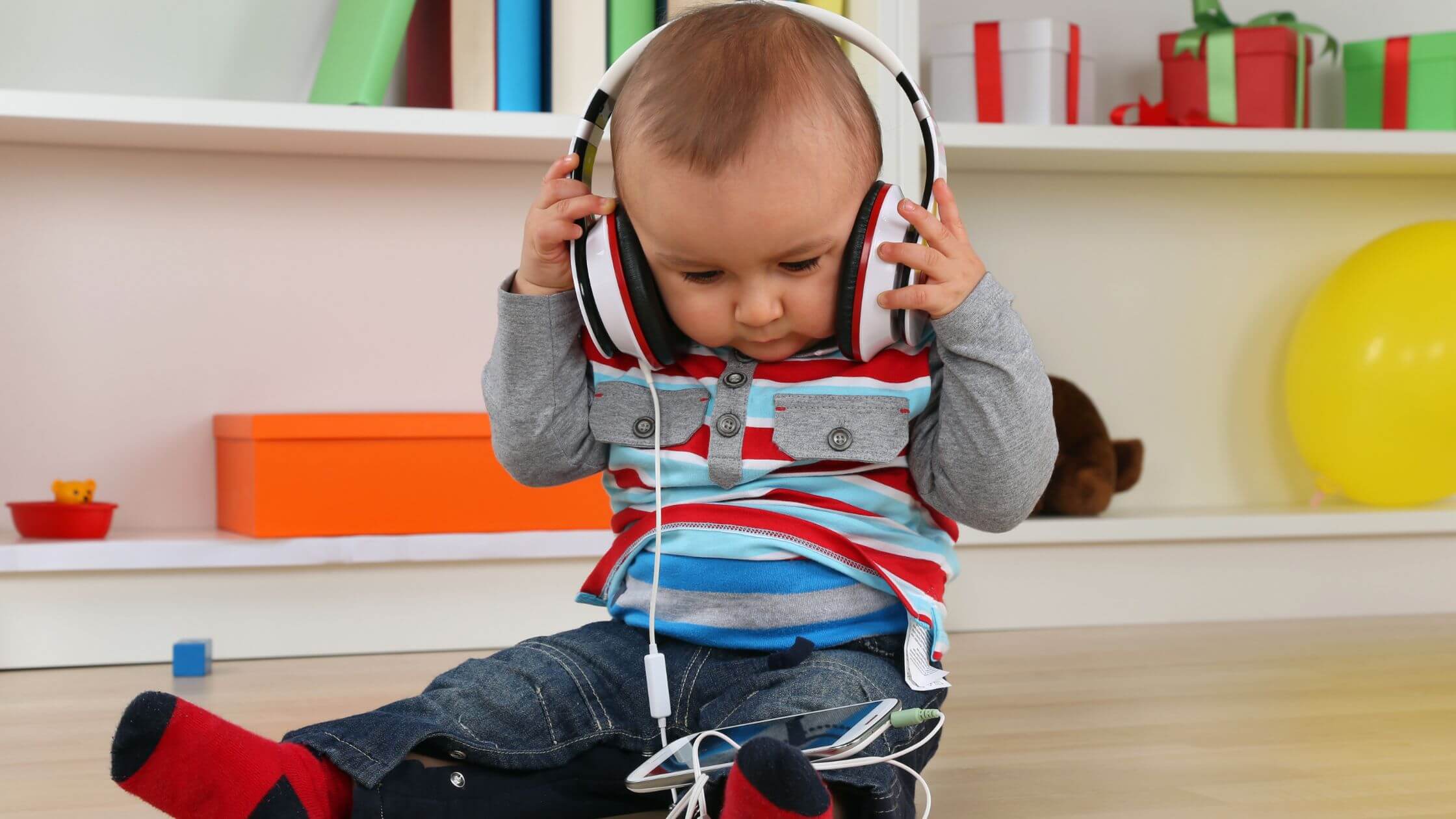This month we are developing our series on using songs for specific age groups. This article introduces suitable songs for babies aged 6–12 months, based on their general developmental skills and behaviour. We also provide ideas on how to extend these songs for children as they get older, developing both their musical understanding as well as their physical application and expression of musical concepts through movement and dance.
In their early years, children develop so quickly. Creating opportunities for new experiences has been shown to be a marked factor in building resilience and in children thriving. Adding the impact of creative experiences – not just repeating but literally creating something new – gives children the opportunity to develop their personal skills, explore their interests, and progress from thriving to flourishing.
How Music And New Experiences Builds Resilience
At this age, children become more aware of their environment, the people around them, and the impact they could potentially have on everything. They develop the strength and skill to sit independently, move around through “bum shuffles” or belly crawling, and, as they gain more control, they can begin to voluntarily release objects, enjoying placing them in containers.
They become fascinated by mirrors and reflections, start communicating through pointing, and become aware of unpleasant situations, with their new ability to show fear.
Little ones aged 6-12 months:
- Begin to start crawling
- Enjoy exploring toys
- Gradually move to cruising furniture and then standing
- Begin to use things intentionally
- Enjoy hiding games like peek-a-boo or peep-bo
- Are fascinated by their own hands and feet
- Start to become attached to familiar toys and people
- Begin to demonstrate their likes and dislikes
- Start to imitate speech, often beginning with “da da da”
- Are able to imitate simple rhymes
- Begin to start babbling
Using these skills as starting points helps us proactively support children towards empowering them.
Song Ideas For You To Try
Rain rain
Rain, rain, go away,
Come again another day
Rain, rain, go away
All the children want to play
This lovely, well-known little song can be used as a gentle introduction to water play, creating a positive experience of water for little ones. In these early years, so much development takes place so quickly. Spring- and summer-born infants will be 6–12 months old during the winter, developmentally ready for a host of new experiences.
During the winter, a water play table or a large dish or bowl of warm water can be used. In the summer, these could even be used outside, along with a shallow paddling pool. Little ones can explore water through touch and taste by creating opportunities for them to pour, fill, and even gently splash, ensuring they are not overwhelmed by surprises.
Musically, the “nee-naw” tune is a common playground sound that is also popular in folk music. Music education theorists suggest that this is because the specific distance between the notes (2 tones) is close enough for young children’s undeveloped vocal folds to sing accurately, yet far apart enough to be clearly heard as opposites, high and low. This makes them easy to recognise and remember, which is why many children’s songs and music teachers use this melody.
Round and round
Round and round the wheel goes round
As it goes the corn is ground
Musically, this song uses a third note, consciously introducing children to a higher note than the initial nee-naw tone. The alternation between middle-high and middle-low notes creates a circular feeling to the melody, reinforced by the lyrics “round and round” and references to wheels.
This song can also be used to educate children about food production, the origins and uses of corn, and how it is managed by farmers in non-industrialised cultures.
As children grow older and begin walking, it can be used as a circle dance. This can be introduced with children initially following a tape line or circular markings on the floor to maintain a clear central space, then holding hands. Finally, this can evolve into walking in concentric circles in opposite directions, creating a visually effective display.
Teddy bear
Teddy bear, teddy bear, turn around
Teddy bear, teddy bear, touch the ground
Teddy bear, teddy bear, tie your shoe
Teddy bear, teddy bear, I love you
Teddy bear, teddy bear, climb the stairs
Teddy bear, teddy bear, say your prayers
Teddy bear, teddy bear, turn off the light
Teddy bear, teddy bear, kiss goodnight
This song has a few variations, with different lyrics and even different rules. Most of them follow similar rules to “Simon Says”, where children literally follow the actions of the teddy bear. Other variations involve children taking turns making up new instructions with increasingly complex actions. Some are even played in swimming pools, with actions completed while holding their breath underwater.
This variation is closer to Simon Says, with children independently acting out actions like turning around, touching the ground, tying imaginary shoes, and hugging themselves for “I love you”.
Musically, this song gradually introduces more notes, using only a few that go slightly higher or slightly lower. This gradual progression gives children a strong musical base, enabling them not only to recognise familiar sounds or motifs but also to sing them accurately and successfully.
Growing Musical Understanding Through Simple Songs
Taking a gradual approach to education is not a new concept, but in music, it still feels fairly novel. The idea that children could or should sing like adults has long been encouraged in the mainstream. Children who sing in tune are often labelled as “naturally gifted” or described as having a “genetic predisposition”, despite clearly benefiting from early positive experiences, often through family. However, when nurseries introduce music education gradually, combined with a love for music, the sky is the limit!

